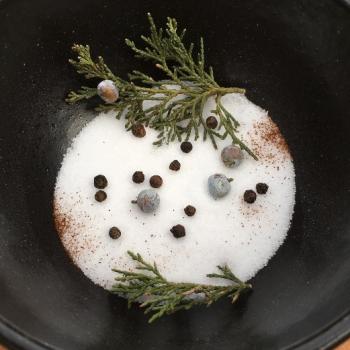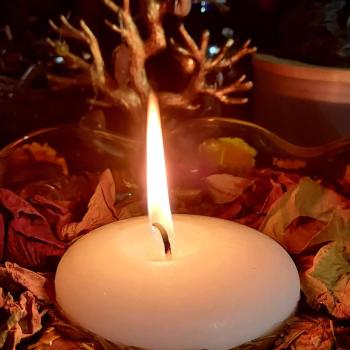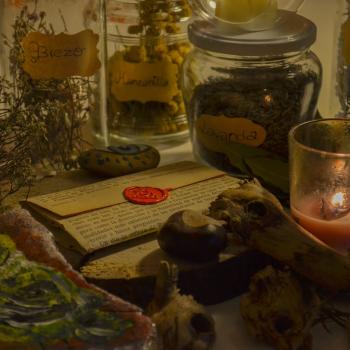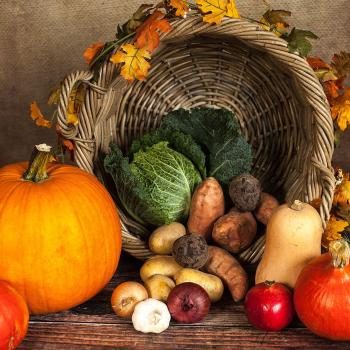Rosemary is one of my favorite plants to grow and with which to work. Years ago, it is the first plant I chose when venturing into growing herbs. And because of continued success experienced with rosemary, I recommend this plant for beginning container gardeners because it is hardy when treated well. So, allow me to share some information with you about rosemary and how you can partner with this beautiful plant.
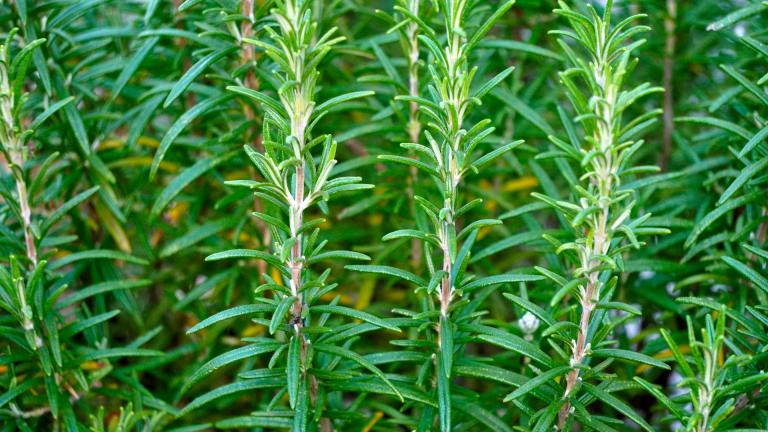
Rosemary: What You Need To Know To Grow
Known as Salvia rosmarinus, this plant is recognized as an herbaceous evergreen. The plant has leaves that are needle-shaped with a white band underneath and can have white, blue, or pink blossoms when it flowers. Rosemary is part of the Lamiaceae family of plants which includes oregano, thyme, basil, and lavender.
Rosemary is perennial which means it can live for more than one season. While its place of origin is the Mediterranean, it can grow well in colder places such as the Mid-Western United States. And while it can grow outside in places like Michigan (where I live), growing rosemary in a container makes it easier to bring the plant indoors when it gets cold.
You can grow rosemary from seed but, it is challenging. It’s better to grow additional plants from established cuttings. Here is how you do it:
- With a pair of scissors, cut a two or three-inch stem from soft or new growth, removing the leaves from the bottom two-thirds of the stem.
- Place the stem in a container with potting soil such as Miracle-Gro. Be sure the pot drains well.
- Cover the pot with a plastic bag and place it in a shady spot with indirect sunlight.
- When you see new growth, transplant the rosemary into a new location (either outdoors or a larger pot) with full sun.
Other growing instructions include:
Rosemary needs to have full sun for at least 6-8 hours a day. Be sure to keep it in a pot that can drain well. This plant does not like “wet feet.” When brought indoors for Winter, rosemary prefers a cooler spot with plenty of sunshine.
If the leaf tips turn brown, mist the plant and avoid over-watering. Rather, keep the soil on the drier side and water once a week. Don’t be alarmed if it doesn’t grow much. That’s normal when rosemary is “wintering.”
If you plant outdoors, keep rosemary in a sunny garden or hedge-row, where it will grow 4 – 6 feet tall. The plants can be pruned into shapes as with any decorative shrub. The beauty is that while it is woody in the way of most fir-like evergreens, its earthy scent (with a camphor element) discourages pests and its leaves can be used for culinary, medicinal, and magickal purposes.
Harvesting
Leaves and sprigs can be cut from the plant with scissors throughout the growing season.
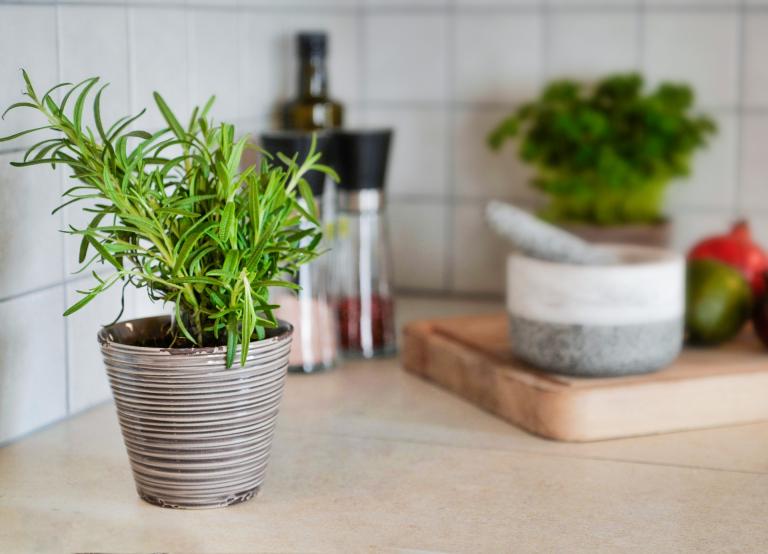
Rosemary: A Brief History Lesson
As stated, the plant originates from the Mediterranean, with its first mention around 5000 B.C.E. on cuneiform tablets. While it’s known the Egyptians used rosemary in their funeral rites, other information is vague.
In fact, rosemary is absent in ancient text until Roman historian Pliny the Elder (23-79 C.E) writes about the plant in Natural History. Later, Dioscorides (40-90 C.E.), the Greek physician and botanist, includes rosemary in his great work De materia medica, which is a five-volume work on herbal medicine. The herb is also known to have made its way to China during the late Han Dynasty (220 C.E).
While records are quiet, there is an assumption the Romans may have introduced rosemary to England during their occupation of the country in the 1st-century C.E. However, records of the plant do not appear until the 8th-century C.E. In fact, rosemary’s “official introduction” to English gardening is 1338 when Queen Phillipa (wife of Edward II) received cuttings as a gift from the Countess of Hainault with a description of the herb’s properties.
The herb came to America in the 17th century. From there, rosemary spread to South America and then to other parts of the world to the global presence it enjoys today.
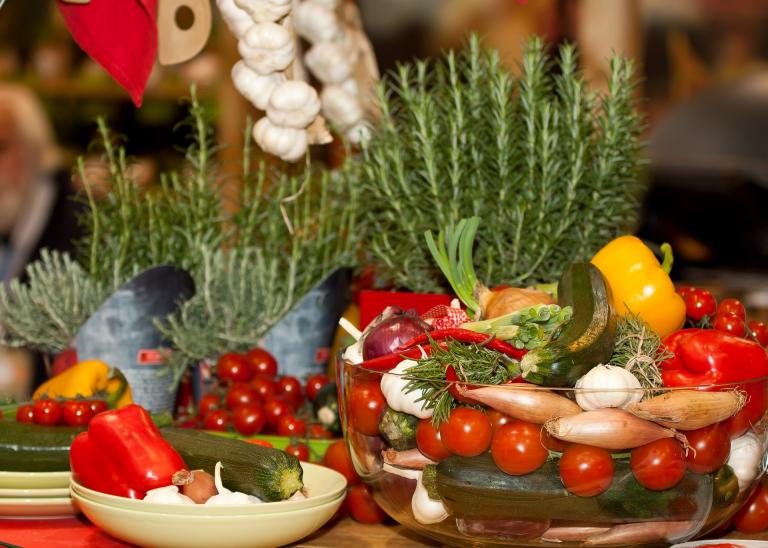
Rosemary: Use As A Culinary Herb
Much like other herbs within the Lamiaceae family, rosemary has a multitude of practical uses. As a culinary herb, you will find it pairs with parsley, sage, and thyme as a blend (and featured in a catchy tune!) to complement various types of meat (beef, chicken, lamb) and a multitude of vegetables.
Rosemary can be used as the whole dried leaf or ground into a fine powder. Entire sprigs can be placed over meat while cooking in the oven, on the stove, or in a crock-pot. One of my favorite ways to use the herb is on roasted potatoes:
Gwyn’s Rosemary Roasted Potatoes Recipe
*This is great to use on carrots, onions, mushrooms, zucchini, etc. I tend to do them all at the same time for a great mélange.
Ingredients:
- Potatoes (russet, gold, or some other variety) – cleaned and sliced
- Rosemary (fresh or dried) – if using fresh, remove from stem
- Extra-virgin Olive Oil
- Sea Salt (fine ground)
- Pepper (fine ground)
Instruction:
- Lay the slices of potato on a baking sheet that has been prepared with extra-virgin olive oil.
- Sprinkle the potato slices with sea salt and pepper.
- Sprinkle rosemary over the potatoes. If using dried, crush the leaves before sprinkling in hand or with a mortar and pestle.
- Bake in the oven at 400 degrees, until the potatoes are golden brown and tender.
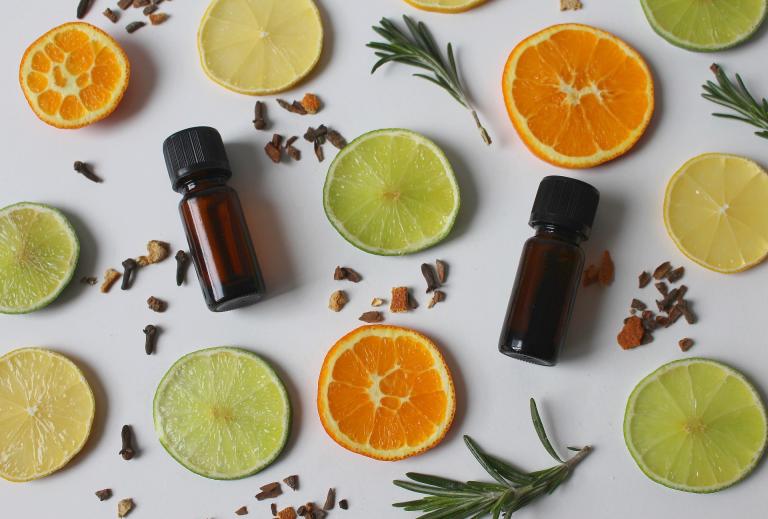
Rosemary: Use As A Medicinal Herb
As an herb (whole leaf or essential oil), rosemary is recognized as a valuable medicinal ingredient. While those who are pregnant, suffer from epilepsy or hypertension should avoid using it, this herb is great for assisting the body when dealing with asthma, cold/flu symptoms, fatigue, headache, mild depression (as it lifts mood and clears the mind), and sinus/allergy troubles.
Rosemary can be enjoyed as a tea that you can purchase or steep from what you grow. Legend has it that Queen Elizabeth of Hungary enjoyed the beverage as a “youth tonic.” The essential oil can be used in shampoo for a healthy scalp or added to a diffuser to lift mood, freshen the air, or assist with breathing.
I enjoy running my fingers very gently over the leaves of my plants and breathing in the invigorating scent. Rosemary is excellent for helping one remain alert and clearing the mind.
If you’d like to make a tea from fresh rosemary leaves, here is how you do it:
Fresh Rosemary Infusion
*You can use this infusion as a tea to drink or as an herbal wash. Rosemary has astringent properties as well.
Ingredients:
- 1 sprig of rosemary (enough to make 1 or 2 teaspoons of fresh leaves).
- 8 ounces of boiling water
- A heat conserving container (mug, travel mug, etc)
- A loose tea strainer
Instructions:
- Remove the leaves from the sprig, rubbing gently to release the scent.
- Place the loose leaves into the tea strainer
- Place the tea strainer into the mug.
- Pour the boiling water over the tea strainer into the mug.
- Let the brew steep for 5 to 10 minutes.
- Remove the strainer.
- Sweeten the infusion if desired and enjoy.
*Be aware that while rosemary is considered a safe herb, there are considerations and contraindications. If consumed in large quantities there can be serious side-effects. As with any herb, make responsible choices when using rosemary for medicinal purposes. Always do the research and understand best practices.
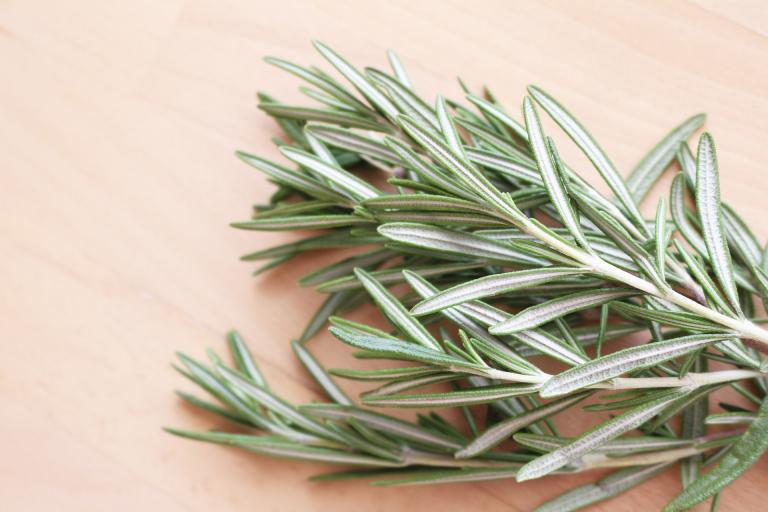
Rosemary: How To Work With The Plant As A Magickal Ally
Also known as Elf Leaf and Old Man, this plant has a variety of correspondences within witchcraft. As an evergreen, you can include rosemary as part of Yule or Walpurgis celebrations. It is also associated with the element of fire and “Yang” energy. In planetary magick, Mercury, the Sun, and the Moon work well with Rosemary. And the plant has associations with the Good Neighbors.
Intentions with which rosemary can assist include the afterlife, banishing, binding, comfort, communication, clarity, concentration. You can also use rosemary in ritual and magickal workings for cleansing, defense, empowerment, loyalty, luck, marriage, memory, and psychic ability. And let’s not forget to partner with this plant for intuition, spirit work, well-being, wisdom, and youth.
And what I’ve listed is the tip of the ice-berg. While I do not work with the Good Neighbors (Fae folk), I am devoted to Hekate. As an herb with associations to the underworld and the moon, I have learned that rosemary complements work with this goddess, even if not “traditionally” associated with Her. And that is why I use a bundle of dried rosemary as incense during chanting/meditation, devotional prayer, and rites focused on Hekate. And it’s very simple to create a dried rosemary bundle dedicated to this purpose. Here’s what I do:
Using Dried Rosemary Bundle In Ritual And Magick
Needed:
- Rosemary plant
- Scissors
- String or yarn
- A dark, cool place where you can hang things.
- A cauldron or fire-safe vessel
- Matches or lighter
Instructions for Drying the Bundle:
- Ask permission and tell the plant spirit your intention. I do this any time I harvest from my plants.
- Cut several long stems. If you can, glean 4- 6 sprigs from your rosemary.
- Remove the leaves from the bottom of the stem, enough to easily form a bundle from the sprigs.
- Tie the string around the stems of the bundle.
- Hang the bundle in a dark, cool place for at least a week or until the leaves are dry.
- Be gentle when you touch the dried bundle so that the leaves do not fall off.
Instructions For Using the Rosemary Bundle
- Carefully remove one sprig from your rosemary bundle. Don’t worry if you lose a few leaves.
- Hold the bundle over the cauldron or fire-safe vessel.
- Holding onto the stem, light the leaves at the top of the sprig and then blow out as flame flares on the dried leaves.
**Be careful when lighting the sprig. Be aware of your location and items on the altar, etc., so that nothing else can catch flame.**
Waft the smoke as incense during prayer or incantation while holding the sprig over cauldron or fire-safe vessel. You can leave it in the cauldron or fire-safe vessel to let the sprig smoke for a few minutes.
If you are careful, you can use one sprig for multiple burnings. During a week of prayer to Hekate, I used the same long sprig to burn as incense for each day. I have also used rosemary sprigs in this way during purification rituals, banishing spells, full moon rites, etc. You can also use loose, dried rosemary leaves over charcoal but I find the dried sprig is more effective as short-term incense.





